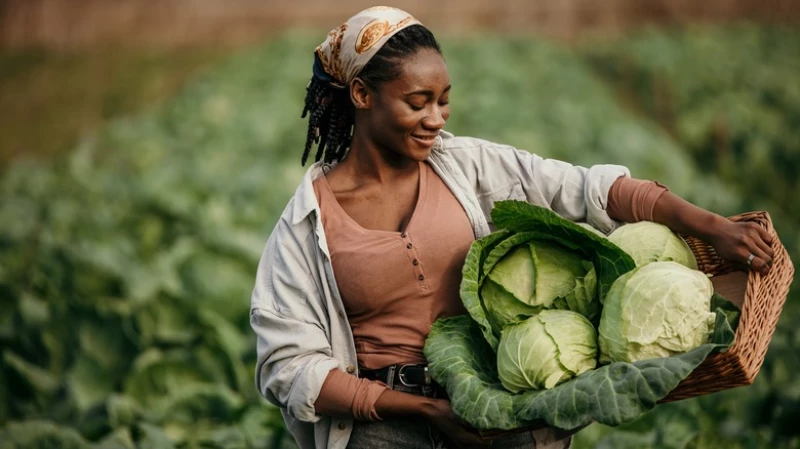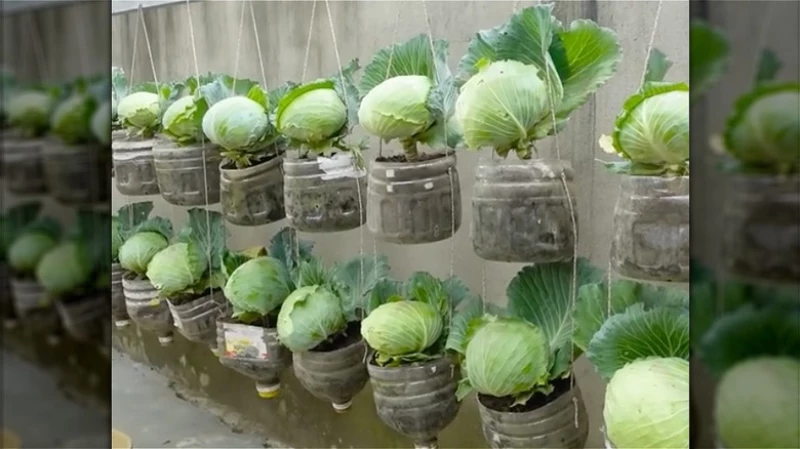Are you interested in growing your own food? Well, one vegetable you should consider is cabbage. It may seem challenging to find enough space to grow cabbage if you have limited land, but TikTok DIY garden hack creator @gardenbyme has a solution. He suggests using hanging plastic bottles to grow cabbage in columns. This innovative method allows you to maximize your space and grow lots of cabbage. Instead of planting them in rows, you can hang the plastic bottles and place the cabbage plants inside. This way, you can have a thriving cabbage garden even with limited space.
Placing cabbage plants in hanging planters

Building your DIY hanging planters is very simple, even if your green thumbs haven't come in yet. Gather all the 1.5-gallon plastic bottles you've been planning to recycle and cut them in half. Now, grab your soldering iron and make two opposite holes on the top of each piece near the large opening, which is where you'll thread the hanging twine. You can then add a few holes to the bottom of each planter to act as drainage holes. Add as many planters to each column as you can before tying and looping the twine together at the top and hanging them on the hooks. Before you use your soil, make sure it has been properly nourished with fertilizer, then fill each of the planters up. If you already have cabbage seedlings, transplant them into the planters and give them a generous drink of water.
Caring for your hanging cabbage plants
Although you're growing cabbage in hanging planters, you should still abide by the normal needs of the plants. When preparing the soil, keep in mind that cabbage needs well-drained, moist soil. If the dirt in your yard isn't up to par, you may have to purchase quality soil. Composting is another great way to keep the dirt hydrated and nutrient-filled. You can also fertilize regularly, preferably weekly, with NPK and calcium nitrate for the first seven weeks after planting the seedlings. Make sure you run soil tests to check that the soil isn't acidic, as cabbage thrives in a pH level ranging from 5.5 to 6.5.
Proper Care for Growing Cabbage
To ensure healthy growth, cabbage plants require a minimum of six hours of full sunlight per day. It is important to position the planters in direct sunlight and avoid placing them in shaded areas. When planting new seedlings, it is crucial to provide sufficient water directly to the soil. However, be cautious not to overwater the plants as this can lead to root rot. Since the cabbage is grown in planters, there is a higher risk of excess moisture dripping from the top planters to the lower ones through the drainage holes. Therefore, it is advisable to water the lower planters slightly less than the top ones. When it comes to harvesting mature cabbage heads, a simple cut to the stem with a knife is all that is needed. Remember to leave a few extra leaves around the heads for added protection.








